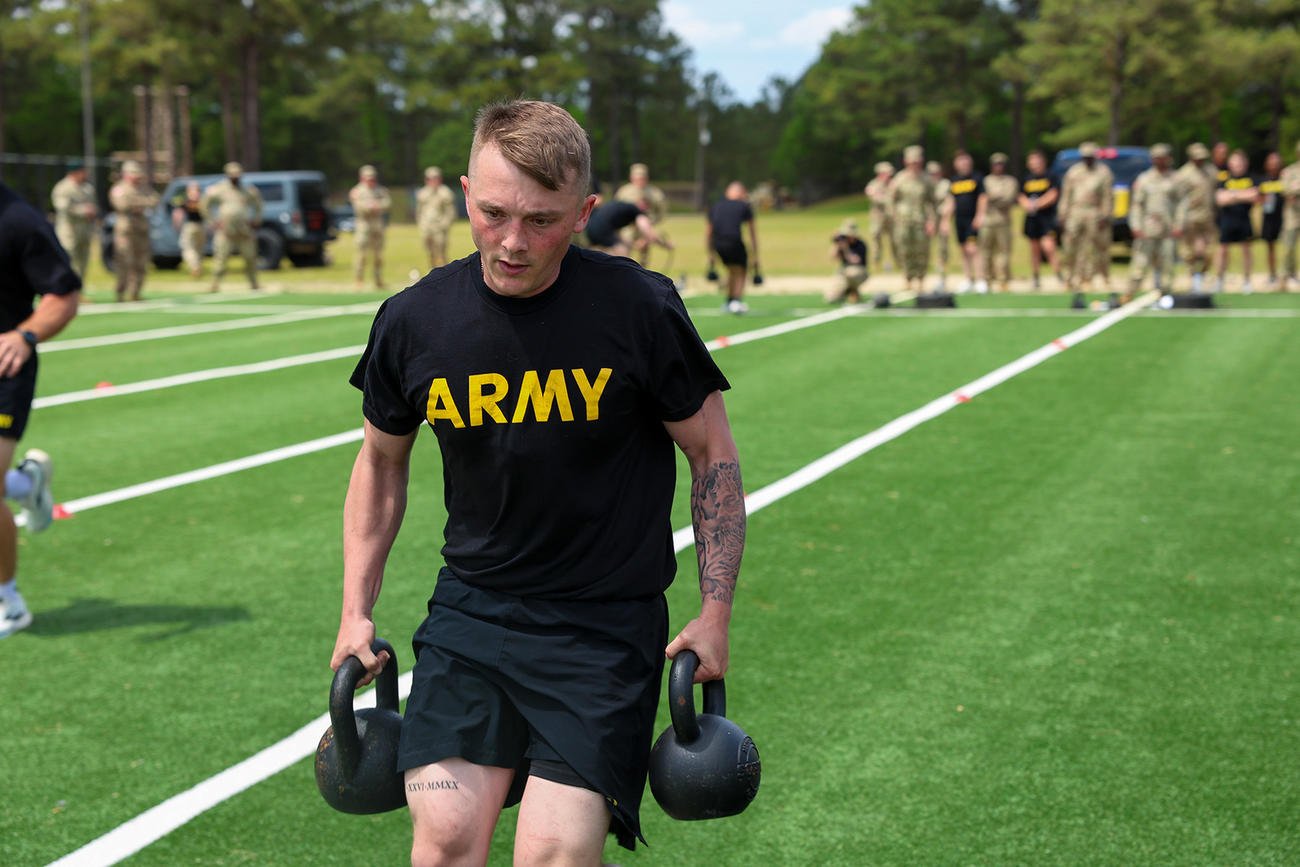

The Army has outlined its new fitness test set to debut in June, but key details surrounding the rollout — including scoring criteria and enhanced standards for combat troops — remain unsettled just weeks ahead of implementation.
The specifics still being ironed out behind the scenes include the Army’s plans to adjust how events are graded, and it plans to release a new scoring chart in May, multiple service officials with direct knowledge of the plans told Military.com on the condition of anonymity because they weren’t authorized to talk to the press.
The service officially rolled out its plans for the new fitness test — rebranded from the Army Combat Fitness Test (ACFT) to just the Army Fitness Test, or AFT — on Monday via a memo from Army Secretary Dan Driscoll, which was first reported by Military.com, as well as a news release. This publication in March was also the first to report the upcoming changes, which include eliminating the standing power throw, an event in which soldiers hurl a 10-pound medicine ball overhead.
Read Next: New Army Fitness Test: No More Ball Yeet, Higher Standards for Combat Arms
With the test going live on June 1, that could give units little time to prepare for new expectations.
“The soldiers are going to be fine,” one active-duty command sergeant major told Military.com on the condition of anonymity because they weren’t authorized to talk to the media. “But there’s probably some unnecessary anxiety out there. There’s room for improvement on the communication from the Army on this one.”
It’s unclear why the service did not release specifics on scoring standards when it announced the new test. A major shift is gender-neutral standards for women in combat arms, though the Army excluded some roles from what it considered to be combat jobs, such as cannon crew members and medics.
Based on the current ACFT scale, the current planned increase in standards is barely noticeable.
Men and women will be required to score at least 60 points in each of the five events but with a minimum overall score of 350. A score of 60 is the current ACFT minimum a soldier can score in an event and pass.
The current ACFT standard of 60 points for a 17- to 21-year-old male includes a 140-pound deadlift and 10 hand-release push-ups.
However, if the service makes adjustments to how events are graded, a 60 in the current fitness test may not exactly correlate with a 60 on the new AFT test.
Under the current scoring system, 600 is the maximum score — though that will presumably go down to 500 with one of the six events taken out. While the test becomes official in June for every component of the Army, the combat standards do not take effect until January for active-duty soldiers and then in June 2026 for the National Guard and Reserve.
It’s also unclear what the service plans to do with the 540 exemption, which allows troops who hit that score to skip body fat measurements — the idea being scoring that well almost guarantees an elite level of athleticism. Troops in the past have raised issues with certain body types, particularly muscular women, that have been inappropriately flagged as overweight due to how the service uses measuring tapes to judge body mass.
Service planners had been working on a more significant increase to the standard during the Biden administration, but the idea never came to fruition.
Changing the test marks the first significant move of Driscoll’s tenure, whose dual-hatted role also overseeing the Bureau of Alcohol, Tobacco, Firearms and Explosives has him working two significant federal management jobs.
The fitness test changes also come after a congressional mandate to increase standards for combat-arms roles in the Army before June, and weeks after Defense Secretary Pete Hegseth ordered a review of fitness standards across all services.
Hegseth, a former National Guard officer, has been vehemently against women in combat roles, writing in his most recent book that “we need moms. But not in the military, especially in combat units.”
Related: Hegseth Has Ordered a Combat Standards Review. It’s Unclear How It Might Apply to All the Services.
